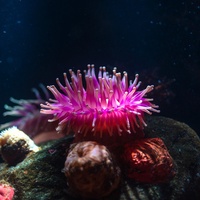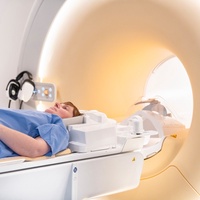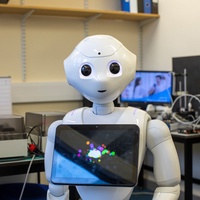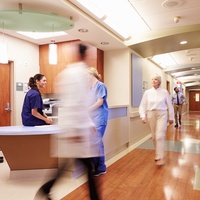Initiating collaborative work on radiofrequency over optics for FFC imaging
The School of Medicine’s research into Fast Field Cycling represents a major shift forward in MRI technology. While this exciting new system has already been commissioned for use in Aberdeen Royal Infirmary from the summer of 2022, collaborative work still needs to be done to ready the protype for commercialisation.
Human robot interaction network
Robotics and AI are at the forefront of the current fourth industrial revolution. The acquisition and deployment of Pepper, a humanoid robot designed for human robot interaction, will allow academics across the University to collaborate in this area of growing research importance.
Pathways to sustainable and healthy diets: Young people’s views about climate change and eating less meat
Young people are often painted in the media as the generation who will adopt sustainable and healthy diets through concern about climate change and other related issues. But is this really the case? We try to find out.
Mathematical model of hospital patient flow
One of the biggest challenges that hospital management teams face is the uncertainty of when patients will be admitted to and discharged from hospital. Now, a groundbreaking mathematical model will help predict the length of a patient’s stay in order to help optimise patient flow.
How to involve the public and patients in data-intensive research?
Patient and public involvement (PPI) in studies can improve their relevance and impact. Our aim is to identify the best ways to involve PPI in data-intense health research.
Feasibility study of biobanking of faecal tissue for 16S rRNA sequencing and metabolomic studies via the NHS Biorepository and associated blood samples
Gut bacteria differs from person to person. Recently these variations have been shown to affect how well a patient responds to cancer treatments such as chemotherapy or immunotherapy. However, we currently know little about how they affect surgical or radiotherapy treatments. Storing and studying faecal samples from bowel, prostate, and womb cancer patients will grow our understanding in this area.
Revealing DNA resection regulatory mechanisms during meiosis and its application for barley breeding
Barley is one of the world’s most widely-cultivated cereals. However, genetic factors complicate the job of barley breeders, including limitations in the exchange of chromosomal material during a process known as homologous recombination. Our aim is to better understand this with the aim of accelerating the barley breeding process.
Using the rapid regenerative response of the beadlet anemone (Actinia equina) as model system for human wound healing
Faster healing can reduce scarring, infection and the need for amputation. By investigating certain sea creatures we hope to provide insight into tissue regeneration and advance the field of wound healing.
Visual processing in humans and machines
Neuroscientists have argued that machine vision techniques have significant similarities to the human visual system, which has immense implications for technological advancements and our understanding of the human brain. But is this actually the case? By building simple artificial neural networks we aim to find out.
Autonomous robotic sampling of bio-aerosols for real-time DNA sequencing using MinION sequencer
Bioaerosols are tiny airborne particles originating from plants or animals, and human exposure to them comes with potentially serious health risks. We propose using a portable sequencer to determine their source and composition in order to control and regulate potentially dangerous emissions.










